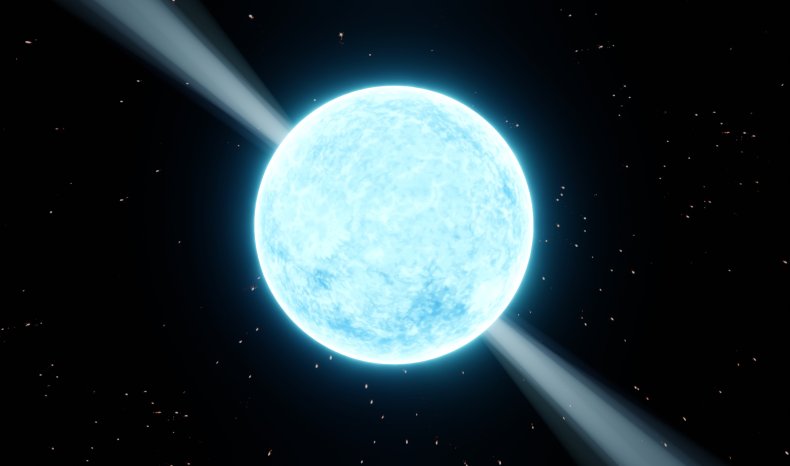Scientists have observed an extremely energetic star that released a burst of energy so violent that it would reportedly take the sun thousands of years to produce the same amount—all compressed into a fraction of a second.
The type of star in question is known as a magnetar. These highly dense stars produce the most intense magnetic fields in the known universe, a thousand trillion times stronger than Earth's according to the Swinburne University of Technology.
Magnetars are a type of neutron star, which itself is a star that is sometimes formed from the collapse of regular stars. Neutron stars are extreme objects that are tiny compared to our own sun—they may be between just 6 and 12 miles across—but are extremely dense and can be many times brighter.
A common way to describe the density of a neutron star is that if someone was to take a teaspoon of neutron star material, it would weigh around 1 billion tonnes (1.1 billion tons).
Neutron stars also spin extremely fast, and can complete over 600 rotations every single second.
In short, neutron stars and magnetars are very extreme objects. Magnetars are pretty rare as far as we know; we've only observed around 30 in the Milky Way.
One magnetar in particular caught the attention of scientists in 2020 after producing a brief flash of energy just a few milliseconds long. In that brief time, it released a tremendous amount of energy.
The signal from the magnetar flare was detected in April 2020 by the Atmosphere–Space Interactions Monitor instrument on the International Space Station. The flare, called GRB2001415, was found to have come from the direction of the galaxy NGC 253.
A report on its discovery was published in the journal Nature on December 22, authored by scientists from multiple facilities in Norway, Spain, Turkey, Denmark, China, the U.S, Ukraine, Germany, India, and Italy.
Víctor Reglero, professor of astronomy and astrophysics at the University of Valencia who took part in the study, described the magnetar as "a true cosmic monster" in a university press release.
The press release stated that the energy released by the burst may have been equal to the energy produced by the sun in 100,000 years.
It's not the only neutron star-related discovery to have taken place recently. This year, new research suggested that a massive neutron star could be created by the same explosive process that leads to the creation of black holes.
Research also found that neutron stars could shed some light on dark matter, the mysterious substance that makes up a significant chunk of the universe but eludes detection.


Post a Comment